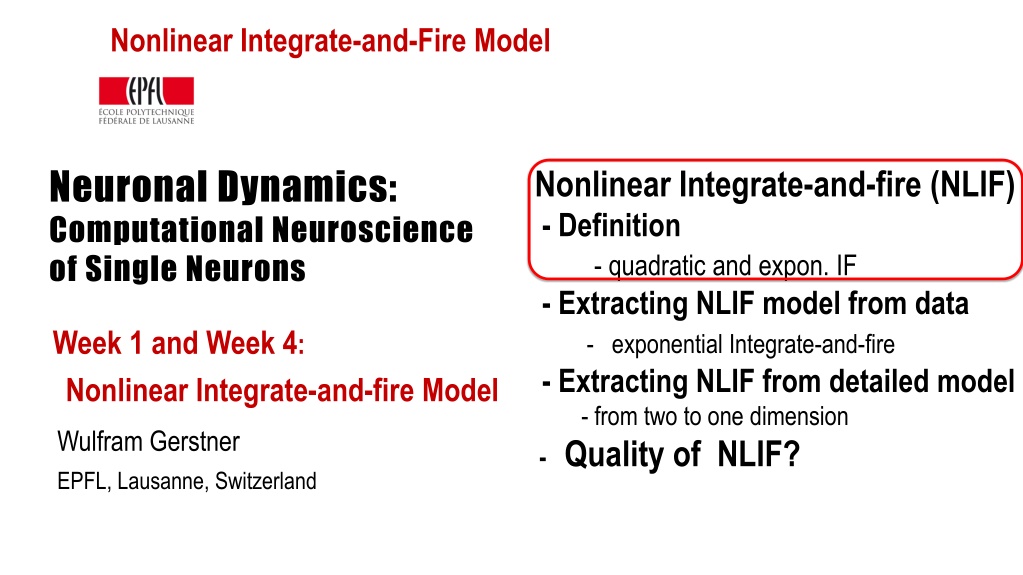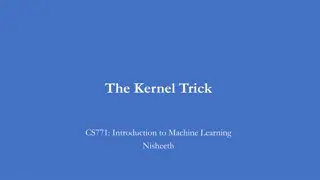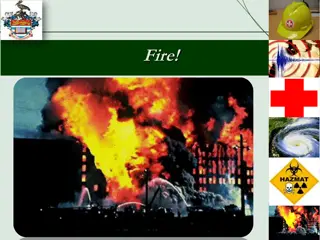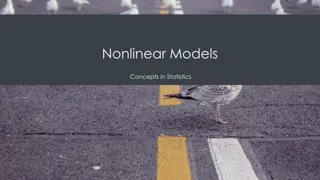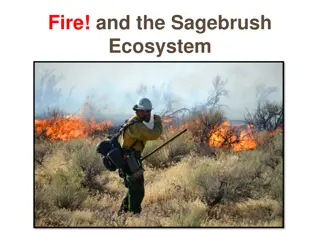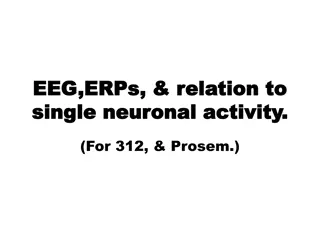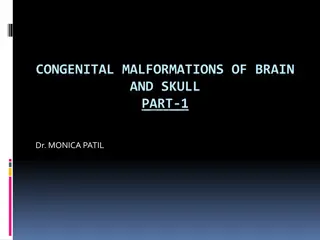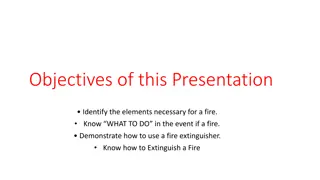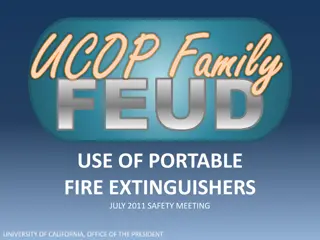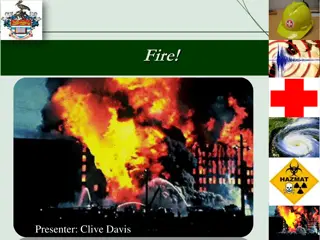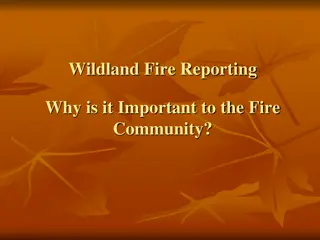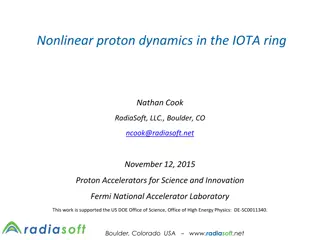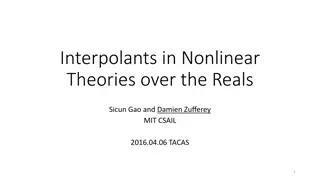Understanding Nonlinear Integrate-and-Fire Models in Neuronal Dynamics
Exploring the Nonlinear Integrate-and-Fire (NLIF) model in computational neuroscience, including its definition, the quadratic and exponential IF variations, and methods for extracting NLIF models from data and detailed neuronal models. Gain insights into the complex dynamics of single neurons through this comprehensive guide.
Download Presentation

Please find below an Image/Link to download the presentation.
The content on the website is provided AS IS for your information and personal use only. It may not be sold, licensed, or shared on other websites without obtaining consent from the author. Download presentation by click this link. If you encounter any issues during the download, it is possible that the publisher has removed the file from their server.
E N D
Presentation Transcript
Nonlinear Integrate-and-Fire Model Neuronal Dynamics: Computational Neuroscience of Single Neurons Nonlinear Integrate-and-fire (NLIF) - Definition - quadratic and expon. IF - Extracting NLIF model from data - exponential Integrate-and-fire - Extracting NLIF from detailed model - from two to one dimension - Quality of NLIF? Week 1 and Week 4: Nonlinear Integrate-and-fire Model Wulfram Gerstner EPFL, Lausanne, Switzerland
Neuronal Dynamics Review: Nonlinear Integrate-and Fire LIF (Leaky integrate-and-fire) d = rest+ ( ) ( ) u u u RI t dt NLIF (nonlinear integrate-and-fire) d = + ( ) ( ) u F u RI t dt If firing: u u reset
Neuronal Dynamics 1.4. Leaky Integrate-and Fire revisited I=0 d u I>0 d dt u LIF dt d = rest+ ( ) ( ) u u u RI t dt If firing: u u u repetitive resting r u u t t
Neuronal Dynamics 1.4. Nonlinear Integrate-and Fire Nonlinear Integrate-and-Fire d I=0 d I>0 u u dt dt NLIF d = + ( ) ( ) u F u RI t u dt u r r r if u(t) = then firing: u u r
Nonlinear Integrate-and-fire Model Spike emission j i i u r F reset I d = + ( ) ( ) u F u RI t NONlinear dt r if u(t) = then Fire+reset threshold
Nonlinear Integrate-and-fire Model I>0 I=0 d d u u dt dt u u r r d Quadratic I&F: ( ) c = = + ( ) ( ) u F u RI t NONlinear 2 + ( ) F u u c c dt 2 1 0 r if u(t) = then Fire+reset threshold
Nonlinear Integrate-and-fire Model I>0 I=0 d d u u dt dt u u r r d Quadratic I&F: ( ) c = = + ( ) ( ) u F u RI t 2 + ( ) F u u c c dt 2 1 0 exponential I&F: r if u(t) = then Fire+reset = + ( ) ( ) exp( ) F u u u c u 0 rest
Nonlinear Integrate-and-Fire Model Nonlinear Integrate-and-fire (NLIF) - Definition - quadratic and expon. IF - Extracting NLIF model from data - exponential Integrate-and-fire - Extracting NLIF from detailed model - from two to one dimension Neuronal Dynamics: Computational Neuroscience of Single Neurons Week 1 and Week 4: Nonlinear Integrate-and-fire Model Wulfram Gerstner EPFL, Lausanne, Switzerland
Neuronal Dynamics Review: Nonlinear Integrate-and-fire See: week 1, lecture 1.5 r u du dt = + ( ) f u ( ) RI t = If then resetto u reset What is a good choice of f ? = u u r
Neuronal Dynamics Review: Nonlinear Integrate-and-fire du dt = + ( ) f u ( ) RI t (1) = = If u then resetto u u (2) reset r What is a good choice of f ? (i) Extract f from data (ii) Extract f from more complex models
Neuronal Dynamics Inject current record voltage voltage I(t) = + ( ) ( ) exp( ) F u u u u rest u [mV] 1 C 1 du = ( ) ( ) I t F u dt Badel et al., J. Neurophysiology 2008
Neuronal Dynamics Review: Nonlinear Integrate-and-fire Badel et al. (2008) du dt (i) Extract f from data du f u RI t dt u = + ( ) ( ) = + ( ) exp( ) u u rest ( ) f u = ( ) f u Exp. Integrate-and-Fire, Fourcaud et al. 2003 Pyramidal neuron Inhibitory interneuron linearexponential Badel et al. (2008) linearexponential
Neuronal Dynamics Review: Nonlinear Integrate-and-fire du dt = + ( ) f u ( ) RI t (1) = = If u then resetto u u (2) reset r Best choice of f : linear + exponential du dt u = + ( ) exp( ) u u rest BUT: Limitations need to add -Adaptation on slower time scales -Possibility for a diversity of firing patterns -Increased threshold after each spike -Noise
Week 4 part 5: Nonlinear Integrate-and-Fire Model Nonlinear Integrate-and-fire (NLIF) - Definition - quadratic and expon. IF - Extracting NLIF model from data - exponential Integrate-and-fire - Extracting NLIF from detailed model - from two to one dimension Neuronal Dynamics: Computational Neuroscience of Single Neurons Week 1 and Week 4: Nonlinear Integrate-and-fire Model Wulfram Gerstner EPFL, Lausanne, Switzerland
Neuronal Dynamics 4.5. Further reduction to 1 dimension 2-dimensional equation After reduction of HH to two dimensions: stimulus du dt dw = + ( , ) F u w ( ) RI t = ( , ) G u w slow! w dt Separation of time scales -w is nearly constant (most of the time)
Neuronal Dynamics 4.5 sparseactivity in vivo Spontaneous activity in vivo awake mouse, cortex, freely whisking, -spikes are rare events -membrane potential fluctuates around rest Aims of Modeling: - predict spike initation times - predict subthreshold voltage Crochet et al., 2011
Neuronal Dynamics 4.5. Further reduction to 1 dimension stimulus dw w = 0 du = + dt ( , ) ( ) F u w I t dt dw = ( , ) G u w w dt Separation of time scales I(t)=0 u w u Flux nearly horizontal du = 0 dt Stable fixed point
Neuronal Dynamics 4.5. Further reduction to 1 dimension Hodgkin-Huxley reduced to 2dim dw = 0 dt du = + ( , ) ( ) F u w I t dt dw = ( , ) G u w w dt du Separation of time scales = 0 dt w u dw dt du dt 0 w w w rest Stable fixed point = + ( , ) ( ) F u w RI t rest
Neuronal Dynamics Review: Nonlinear Integrate-and-fire du dt (i) Extract f from more complex models = + ( ) f u ( ) RI t A. detect spike and reset resting state Separation of time scales: Arrows are nearly horizontal Spike initiation, from rest du dt dw w w See week 3: 2dim version of Hodgkin-Huxley = + ( , ) F u w ( ) RI t rest B. Assume w=wrest = ( , ) G u w w dt
Neuronal Dynamics Review: Nonlinear Integrate-and-fire du dt (i) Extract f from more complex models = + ( ) f u ( ) RI t linearexponential du du dt dt See week 4: 2dim version of Hodgkin-Huxley = = + + ( , ( , ) ) ( ) ( ) F u w F u w R I t R I t Separation of time scales w rest dw = ( , ) G u w w w rest dt
Neuronal Dynamics 4.5. NonlinearIntegrate-and-Fire Model du dt Image: Neuronal Dynamics, Gerstner et al., Cambridge Univ. Press (2014) = + = + ( , ) ( ) ( ) f u ( ) F u w RI t RI t rest Nonlinear I&F (see week 1!)
Neuronal Dynamics 4.5. NonlinearIntegrate-and-Fire Model Exponential integrate-and-fire model (EIF) = u u + ( ) f u ( ) exp( ) u rest du dt Image: Neuronal Dynamics, Gerstner et al., Cambridge Univ. Press (2014) = + = + ( , ) ( ) ( ) f u ( ) F u w RI t RI t rest Nonlinear I&F (see week 1!)
Neuronal Dynamics 4.5. ExponentialIntegrate-and-Fire Model Exponential integrate-and-fire model (EIF) = u u + ( ) f u ( ) exp( ) u rest linear Image: Neuronal Dynamics, Gerstner et al., Cambridge Univ. Press (2014)
Neuronal Dynamics 4.5. ExponentialIntegrate-and-Fire Model Direct derivation from Hodgkin-Huxley du dt = + 3 4 ( ) ( ) ( ) ( ) I t C g m h u E g n u E g u E Na Na K K l l du dt = + 3 4 [ ( )] ( ) [ ] ( ) ( ) ( ) I t C g m u h u E g n u E g u E 0 Na rest Na K rest K l l Fourcaud-Trocme et al, J. Neurosci. 2003 = u u + ( ) f u ( ) exp( ) u rest du dt gives expon. I&F = + = + ( , , ) ( ) ( ) f u ( ) F u h n RI t RI t rest rest
Neuronal Dynamics 4.5. Nonlinear Integrate-and-Fire Model 2-dimensional equation du F u w dt dw w = = + ( , ) ( ) RI t ( , ) G u w dt Separation of time scales -w is constant (if not firing) du f u dt threshold+reset for firing = + ( ) ( ) RI t Relevant during spike and downswing of AP
Neuronal Dynamics 4.5. Nonlinear Integrate-and-Fire Model 2-dimensional equation du F u w dt dw w = = + ( , ) ( ) RI t ( , ) G u w dt Separation of time scales -w is constant (if not firing) du f u dt = + ( ) ( ) RI t Linear plus exponential
Nonlinear Integrate-and-Fire Model Neuronal Dynamics: Computational Neuroscience of Single Neurons Nonlinear Integrate-and-fire (NLIF) - Definition - quadratic and expon. IF - Extracting NLIF model from data - exponential Integrate-and-fire - Extracting NLIF from detailed model - from two to one dimension - Quality of NLIF? Week 1 and Week 4: Nonlinear Integrate-and-fire Model Wulfram Gerstner EPFL, Lausanne, Switzerland
Neuronal Dynamics 4.5 sparseactivity in vivo Spontaneous activity in vivo awake mouse, cortex, freely whisking, -spikes are rare events -membrane potential fluctuates around rest Aims of Modeling: - predict spike initation times - predict subthreshold voltage Crochet et al., 2011
Neuronal Dynamics 4.5.How good are integrate-and-fire models? Badel et al., 2008 Aims: - predict spike initation times - predict subthreshold voltage Add adaptation and refractoriness (week 7)
Neuronal Dynamics Quiz 4.7. A. Exponential integrate-and-fire model. The model can be derived [ ] from a 2-dimensional model, assuming that the auxiliary variable w is constant. [ ] from the HH model, assuming that the gating variables h and n are constant. [ ] from the HH model, assuming that the gating variables m is constant. [ ] from the HH model, assuming that the gating variables m is instantaneous. B. Reset. [ ] In a 2-dimensional model, the auxiliary variable w is necessary to implement a reset of the voltage after a spike [ ] In a nonlinear integrate-and-fire model, the auxiliary variable w is necessary to implement a reset of the voltage after a spike [ ] In a nonlinear integrate-and-fire model, a reset of the voltage after a spike is implemented algorithmically/explicitly
Neuronal Dynamics Nonlinear Integrate-and-Fire Reading: W. Gerstner, W.M. Kistler, R. Naud and L. Paninski, Neuronal Dynamics: from single neurons to networks and models of cognition. Chapter 4: Introduction. Cambridge Univ. Press, 2014 OR W. Gerstner and W.M. Kistler, Spiking Neuron Models, Ch.3. Cambridge 2002 OR J. Rinzel and G.B. Ermentrout, (1989). Analysis of neuronal excitability and oscillations. In Koch, C. Segev, I., editors, Methods in neuronal modeling. MIT Press, Cambridge, MA. Selected references. -Ermentrout, G. B. (1996). Type I membranes, phase resetting curves, and synchrony. Neural Computation, 8(5):979-1001. -Fourcaud-Trocme, N., Hansel, D., van Vreeswijk, C., and Brunel, N. (2003). How spike generation mechanisms determine the neuronal response to fluctuating input. J. Neuroscience, 23:11628-11640. -Badel, L., Lefort, S., Berger, T., Petersen, C., Gerstner, W., and Richardson, M. (2008). Biological Cybernetics, 99(4-5):361-370. - E.M. Izhikevich, Dynamical Systems in Neuroscience, MIT Press (2007)
